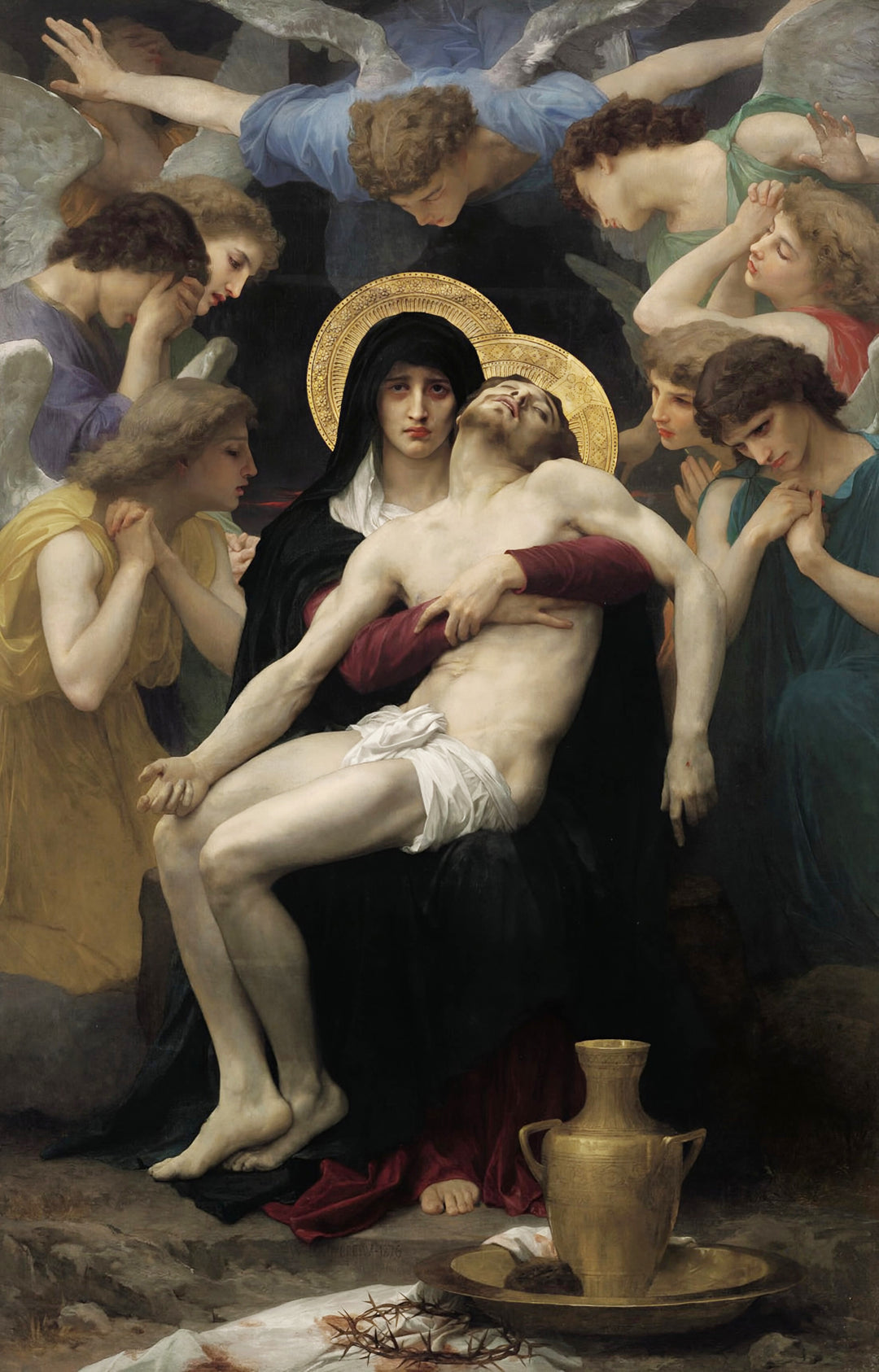
Pietà - Bouguereau
| Author: | Bouguereau |
|---|---|
| Title: | Pietà |
| Original location: | Dallas Museum of Art, Dallas, USA |
| Year: | 1876 |
In his monumental oil on canvas entitled "Pietà," William-Adolphe Bouguereau masterfully renders the human pain shared between the Virgin Mary and her son, emphasizing the carnal dimension of divine suffering.
To fully understand the work of the French master of academicism, it is essential to delve into the deeper meaning of the word "piety." This term comes from the Latin "pietas," which in ancient Rome represented a virtue encompassing duty, devotion, and loyalty to the gods, the homeland, and the family. This virtue involved not only an attitude of respect and reverence, but also an active willingness to fulfill moral and social obligations. Some etymological studies suggest that "pietas" may be related to the Indo-European root "peue" (or peu̯), which conveys the idea of "purifying" or "cleansing." This connection suggests that piety implies a process of purification or restoration to an original state of life free from artificial burdens. Therefore, when we speak of "piety," we refer to a form of sorrow that, though profound, has a transformative purpose. It is a suffering that, when experienced and shared, leads to visible beauty and a deeper connection with others and with the divine. In this context, piety is not merely a passive emotion, but an active virtue that drives human beings to act with empathy, compassion, and devotion, even in the midst of pain.
The composition depicts a mother, Mary, whose eyes are reddened from weeping and whose face is contorted with grief, holding the lifeless body of her son, Christ, whose open wounds and pale skin reveal the physical torment he endured. This representation moves away from previous idealizations, showing a God who, in Jesus, has experienced human pain in its fullest expression: nails, thorns, and whips that tore his flesh. Mary's suffering, pierced by a sword of sorrow as she witnesses her son's torture and death, symbolizes the profound union between the divine and the human in suffering.
Bouguereau, the leading figure of French academicism and Neoclassicism, uses a refined technique with glazing and precise anatomical modeling to convey the emotional intensity of the scene. Notably, the French artist has redesigned Christ's position to highlight a mother's pain. In "The Pietà" by Michelangelo, for example, Jesus appears lying on Mary's lap; here, by contrast, he is almost seated on his mother's legs, as a mother would do with her small child to embrace or feed him. The composition, centered on the figures of Mary and Jesus, is resolved with the mother surrounded by angels who share her pain, one of them dressed in blue, seemingly blowing over her head to try to ease the anguish of the moment. In this way, the artist creates an atmosphere of intimacy and empathy. This work influenced later artists who sought to depict the humanity of the divine, highlighting the role of art as a vehicle capable of conveying comfort and accompanying suffering and frustration, inherent to the precariousness of earthly life. Here Bouguereau reveals to us a God who, by becoming man, joins the desperate, the wounded, and the broken, offering comfort and hope in the midst of his own affliction.